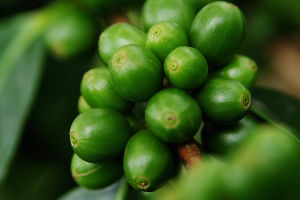In the vast farmland, a green corner stands out, where blueberry trees thrive and create a vibrant scene. Blueberries, as a delicious and nutritious fruit, have gained increasing popularity worldwide in recent years.
Growing blueberry trees not only brings the joy of a bountiful harvest but also creates a harmonious ecosystem, injecting vitality into nature. Blueberries belong to the Vaccinium family, small shrubs with typically short trunks and dense green foliage.
The cultivation of blueberry trees involves considering various factors, including soil conditions, climate requirements, and suitable variety selection.
Firstly, selecting suitable soil is crucial for successful blueberry cultivation. Blueberry trees prefer acidic soil, with a pH value ideally ranging from 4.5 to 5.5. The soil should be rich in organic matter and have good drainage capacity to ensure proper oxygen supply to the roots of the blueberry trees. If the soil pH is too high, it can be adjusted by applying aluminum sulfate or other acidifying fertilizers.
Secondly, climate conditions are also vital for blueberry tree cultivation. Blueberry trees thrive in warm climates, but moderate cold during the growing season is beneficial for flowering and fruiting.
In warmer regions, it is advisable to choose planting locations at lower elevations or in partially shaded areas to avoid adverse effects from excessive heat on blueberries. Additionally, blueberry trees have certain requirements for sufficient sunlight exposure, so it is important to select a location with good sunlight when planting.
Most importantly, choosing the appropriate blueberry variety is crucial. Depending on the climate and soil conditions in different regions, there are various blueberry varieties available for selection.
Some varieties are early-maturing and suitable for cultivation in colder regions, while others are suitable for warmer climates. Choosing a variety suitable for the local region helps improve yield and fruit quality.
The process of growing blueberry trees requires patience and careful nurturing. In the initial stages after planting, regular watering is necessary to keep the soil moist.
Additionally, applying the right amount of fertilizer to provide adequate nutrients contributes to the healthy growth of the trees. Furthermore, regular pruning of the canopy and weed removal is essential to ensure proper ventilation and sufficient sunlight for the blueberry trees.
After some dedicated cultivation, the blueberry trees finally reach the season of a bountiful harvest. The abundant blueberry fruits covering the landscape resemble clusters of blue gems, gradually becoming plump and juicy.
Blueberries are rich in antioxidants and vitamins, playing a significant role in human health. We can savor the delicious gifts of nature and share them with our families and friends, collectively enjoying the generosity of the natural world.
However, growing blueberry trees is not merely about reaping abundant fruits; it also holds value in ecological conservation. The root systems of blueberry trees help stabilize the soil, preventing erosion.
Moreover, they absorb harmful substances from the air, purifying the environment. Blueberry trees form an ecological chain with other plants and organisms, bringing balance and diversity to the surrounding ecosystem.
During the cultivation of blueberry trees, we are not just cultivating fruit but establishing a close connection with nature. Through careful cultivation and nurturing, we can create a beautiful and fruitful orchard.
The growth of blueberry trees witnesses our reverence and gratitude towards nature while providing us with health and delicious enjoyment. Let us together plant blueberry trees and add a touch of blue hope and joy to this world!


